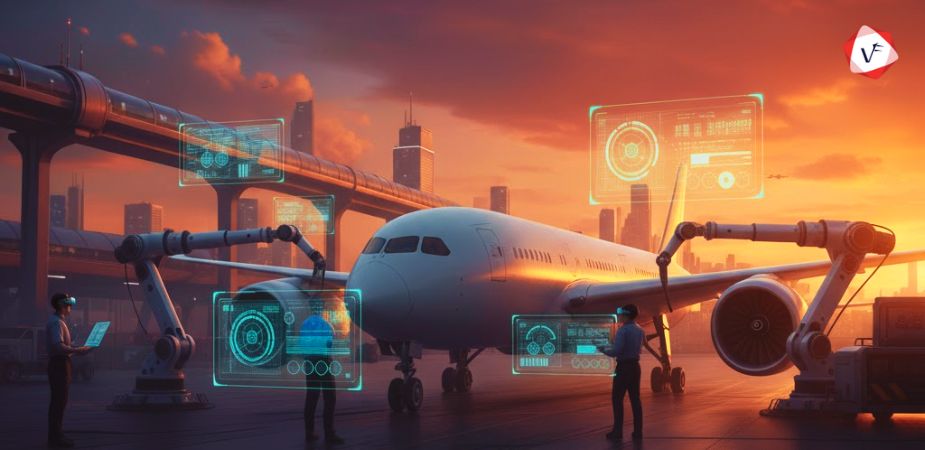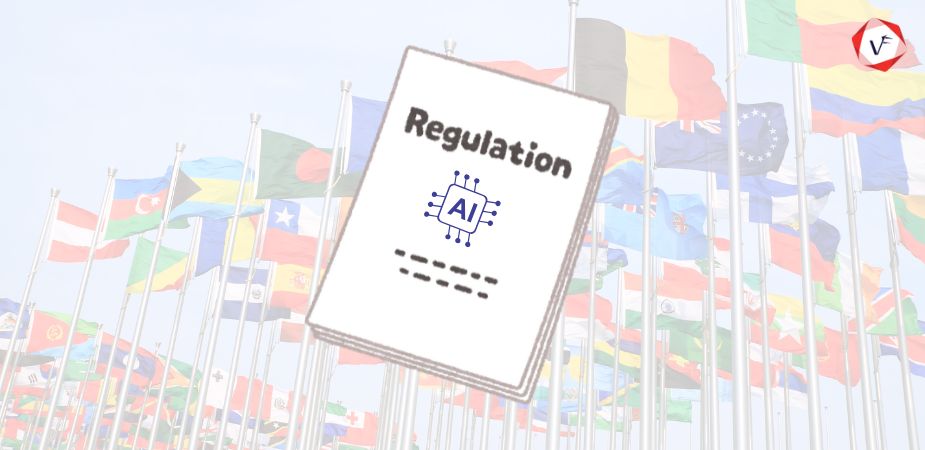Robotic process automation is a technology that makes it easier to create, use, and manage software robots that mimic human actions when interacting with computers and software. Software robots can do the appropriate operations, browse networks, find and extract data, and perform predetermined tasks just like people can. They can also interpret what is portrayed on a computer screen. On the other side, customer service RPA software robots exceed the limits of human skills because they can accomplish tasks more quickly and accurately than humans. Any e-commerce company that prioritizes the customer experience must handle an array of operations, prior to and following the sale, to assist customers in locating products, making purchases, and, if required, resolving issues that may have arisen during the transaction. Robotic process automation can optimize those procedures, resulting in fewer faults, quicker response times, and ultimately, pleased clients who are more likely to stick with the company and make future purchases.
What Does A Customer Service RPA Do?
RPA in customer service relates primarily to the use of RPA technology in the customer service industry. This can involve installing virtual assistants, automating call center procedures, setting up chatbots to assist clients, etc. Some client engagements can be automated with RPA, giving agents more space to concentrate on important customer contacts while providing quick answers to customers’ queries. In this blog, we are discussing How RPA can streamline customer service operations and improve the customer experience.
Benefits of RPA in Customer Service Operations
1. Improved Client Experience
Robots make it possible to respond to customer inquiries more quickly and to handle feedback from customers and statistics more effectively. RPA will not only increase efficiency and decrease errors, but it will also make processes more consistent, regulate, and follow rules. In essence, it can guarantee seamless monitoring of all system changes. In addition, robotic process automation works nonstop to conduct screenings to maintain the accuracy of your processes.
2. Handling Service Problems More Quickly.
By assisting with data collection, updating customer data, and processing client requests, RPA improves productivity. Employees occasionally invest a lot of time looking up and tracking customer information across multiple systems. To assist operators in minimizing wait times and providing better service, RPA can perform this duty by swiftly checking up on the workflow.
3. The Workforce Will Concentrate On Engaging With Customers.
Professionals can communicate with customers and serve more clients when repetitive, boring tasks are cleared from their to-do lists. Customers can gain from companies automating operations because it can make for a quicker and better experience. For instance, a bot can access and extract data to instantly respond to a client’s query, removing the requirement to put the user on hold.
4. Fewer Errors.
Human mistake is reduced when software robots operate without interruption for 24 hours a day. Service quality reports will be more precise if there is a smaller margin of error. As a result, process reliability can help a company better satisfy clients’ needs. RPA gives efficient services to procedures where human error is likely to occur, thereby maintaining accuracy. Robots are dependable, and steady, and provide constant results. They also significantly raise the output quality and cut down on instances of reworks. The finest aspect of this situation is that robots strictly comply with the regulations, delivering 100% precision in the process phase.
5. Automate without disruptions
Start-up businesses face the risk of automation when conducting their operations, while established large companies that have undergone numerous changes may find the use of automation more hazardous due to their old systems. However, with the emergence of RPA technologies built on no-code platforms, complete replacement of all old systems may not be necessary. These robots are designed to mimic human-user interaction and can be trained more easily using older software.
Use Cases of RPA in Customer Service
1. Fast Access to Consumer Data
Although customer relationship management (CRM) programs give previous client information, companies must gather this data from a variety of systems. Several system log-ins reduce productivity and increase hold times. RPA can link various systems so that agents don’t need to switch between them constantly. These interactions run considerably more efficiently owing to the connections that RPA can offer.
2. Automated Email Responses
When a client has an inquiry or makes a request, RPA bots take data from several sources and produce an email in response. For instance, bots retrieve information from:
- Emails asking about store locations and hours can be answered via a FAQ database.
- An email concerning shipment tracking or delay information can be generated using a logistics database.
- To provide details on discounts and offers, a marketing database is used.
- To create email bills for customers, use a finance database.
- IT support materials to address product troubleshooting questions.
- RPA bots also prepare ticket settlement emails and send them to clients who have registered service requests or made complaints.
3. Call Center Operations
Data integration and workflow can be handled conveniently with RPA. The requirement to transition between different applications is addressed by obtaining a comprehensive customer profile from numerous systems by automating actions like application activation, mouse clicks, field entries, etc. The time needed to locate a customer in the design and read all pertinent information about them on one screen is considerably reduced in call centers using RPA. As a response, customer service is enhanced while average interaction length is decreased because the client doesn’t have to wait for the operator to receive all the information.
RPA makes it easier to integrate many systems, allowing different operators to watch the performance of a particular issue without having to keep an eye on all the apps. The entire client profile, including information from prior contacts, can be integrated with just one click in call centers using RPA. This eliminates the need for the representatives to continuously request the same information. As a result, this takes care of the main complaint clients have about call centers, constantly being requested to provide details that they have already given. RPA implementation in call centers significantly enhances customer service in this manner.
4. Improve client service
The most significant purpose is to use data from customer service to enhance the caliber of customer care. Countless metrics can be produced by continuously analyzing and processing the data that is obtained from your dealers’ interactions with clients. RPA is beneficial since it automates a lot of the previously manual digital activities in the customer care journey. Moreover, RPA-enabling technologies like AI, machine learning, and natural language processing (NLP) provided the opportunity to gather more data for analysis, including information from chatbots and live chats. Gathering this data and determining which concerns were likely to require progression or determining which tickets were most likely to be reactivated could then be automated by creating RPA bots. Then, your customer care team might develop plans to handle these situations.
5. Management Of Customer Data
It helps to acquire new clients and update or add fundamental customer information. It also checks for customer information and obtains client input from diverse platforms and manages it beforehand.
Best Practices for Implementing RPA in Customer Service
1. Describe the procedure
Before automating a process, it is crucial to comprehend how it operates. This involves identifying and listing every step of the procedure, along with its inputs and outputs. By doing so, the information needed to automate the process can be identified. Business process modeling techniques can be employed to achieve this.
2. Make an evaluation
One of the top robotic process automation practices is locating constraints for the chosen process. It’s crucial to locate any potential bottlenecks after the process has been developed. By streamlining processes and automating them, these bottlenecks can frequently be eliminated. The steps below can be used to locate process bottlenecks. Find out how long each step will take to complete and when it will do so. Determine which stages use more time than they should or which steps can be shortened. Identify feasible modifications to improve or remove the barriers.
3. Involve the stakeholders.
It is crucial to involve all significant stakeholders early on in the conception and execution of robotic process automation. These professionals will help you define the complex and monotonous tasks they frequently carry out in order to break them down into phases that RPA robots can carry out without requiring human help.
4. Establish distinct governance frameworks and roles
In order to guarantee the efficient adoption of robotic process automation, you should maintain effective governance structures and responsibilities that will acquire knowledge within the organization. The successful adoption of RPA depends on an approach, but a technique can only be beneficial if it considers all important aspects of your process.
5. Choose the appropriate RPA software.
There are many RPA softwares offered, each with a unique combination of features and resources. Companies need to properly select the appropriate option for their particular requirements if they want to improve the outcome of their efforts.
6. Educate and accept additional employees
They are employed for a variety of jobs, including data input, restocking, and customer support. But there is a great deal of hope for these technological advances at work. By streamlining routine processes that staff would otherwise have to perform by hand, they can boost efficiency and output.
Avoid making the same error as most firms by appointing just one specialist as the robotic process automation solution expert. Instead, create a dedicated team of experts to plan, create, and implement robotic process automation systems.
7. Keep an eye on and measure progress
Get it operational with one of the RPA-enabled operations and keep an eye on its performance, the amount of time for the execution, the validity of all inputs and outputs, and, most significantly, whether more robots are needed to complete the work more quickly.
8. Take user opinions into account
The enormous amount of data that robotic process automation technologies offer should be accessible to businesses. They can utilize this information to find trends and gradually enhance the effectiveness of their services.
9. Prepare for and control risks.
Preparation for the threats and putting safety measures in place can help to mitigate the risks involved with using RPA technologies. RPA best practices would need to consist:
- Making sure the software robot cannot decide for itself
- Having a backup plan in place in case the software robot malfunctions or fails
- Before using the procedure, it must first be tested.
- Recording each modification the software robot makes
Challenges of Implementing RPA in Customer Service
1. Cost
The expense of deploying RPA is a further frequent challenge. RPA can be expensive initially, but it’s vital to keep in mind that it can yield a return on investment (ROI) in a short amount of time. RPA costs can be decreased in a variety of ways, including by utilizing open-source software and already existing infrastructure.
2. Lack of qualified employees
We can all agree that the growth of RPA is due to the rise in market demands, yet the RPA market is now experiencing a skills gap. The success of any project is seriously challenged by the necessity of acquiring resources while beginning a new operation.
3. Change Administration
RPA may need a considerable adjustment to the way your company runs. Some firms may find this difficult, especially if they are not accustomed to change. It’s crucial to have a well-defined plan in place for how you’ll apply RPA and what adjustments you’ll make. This will lessen the impact on your organization and ensure a smooth transition.
4. Improper team organization
To guarantee that the hand-offs occur on schedule and to the desired standards, dedicated teams with clearly defined duties for each and every individual are required. Reaching the goals established for RPA initiatives is at risk due to an inadequate understanding of the procedures to be followed and resource sharing between several projects.
Final Thoughts
Organizations may now seamlessly integrate customer assistance and service operations with RPA. Enterprises can be confident that they will get a strong Return on investment because of this technology’s enormously potential benefits. RPA has already been used in practice by several renowned firms. It does this by automating routine and structured data-using operations to boost productivity. This method is simple to use and accelerates processes as well as advanced analytics.
RPA implementation can considerably cut down on the time invested in tracking customers and provide superior customer care with a unified user perspective. As a result, your customer support representatives can gather information more quickly and cut down on client wait times.
Contact Vofox Solutions INC for more information about RPA implementation.





